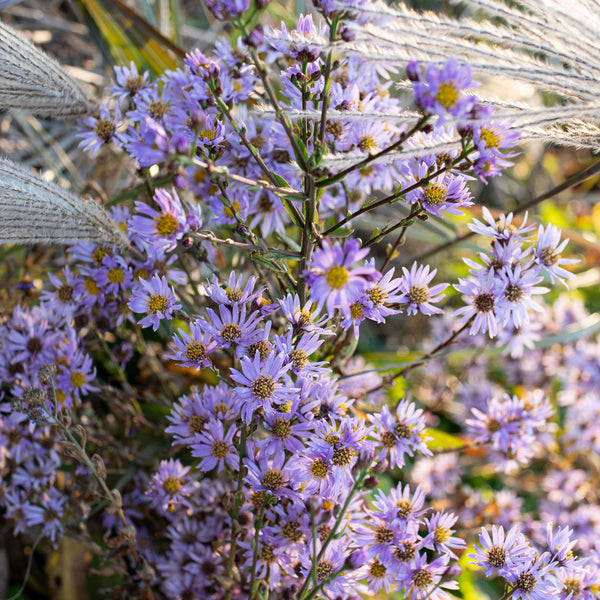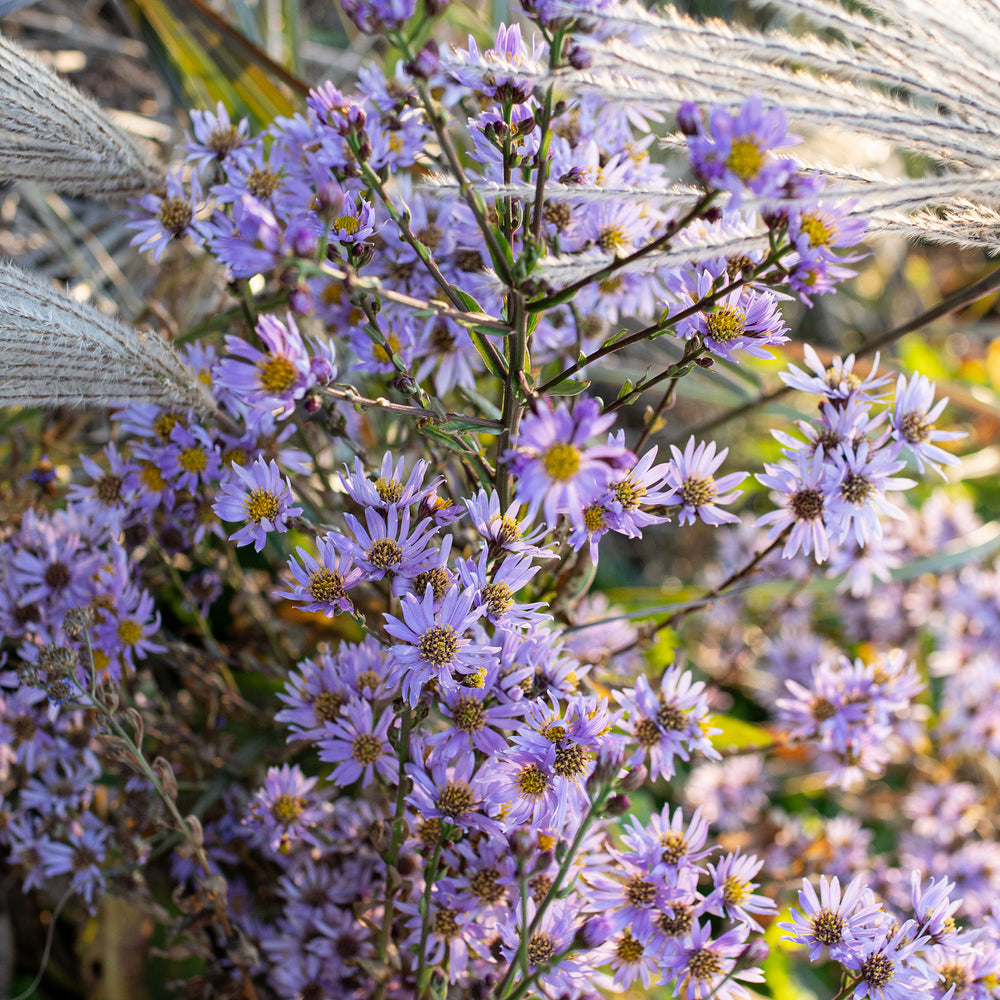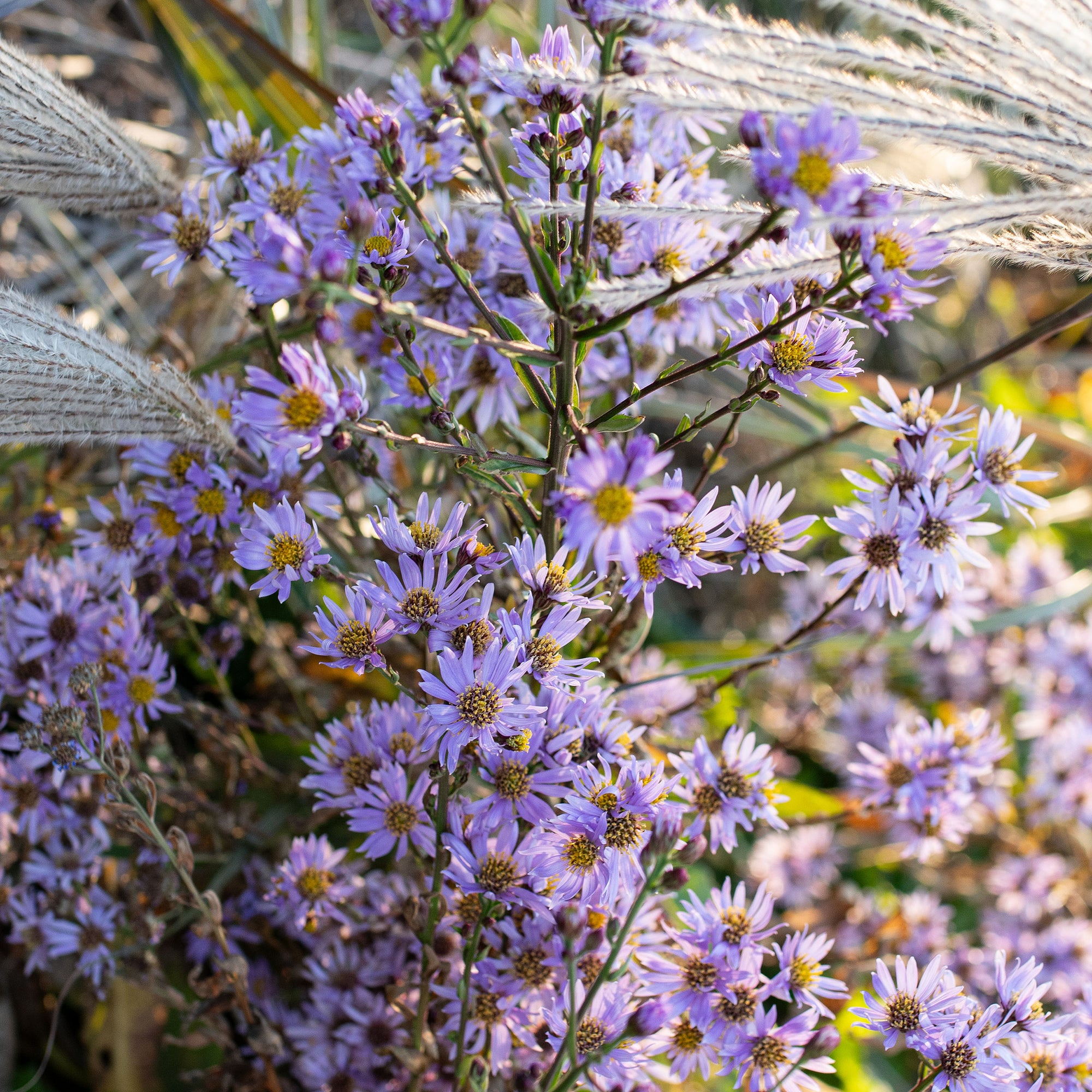SOWING INSTRUCTIONS
Depth:
Surface or barely cover
Starting Indoors:
Stratify for 60 days for best germination results. Sow in a container, cover with a plastic bag and refrigerate, or mix seed with damp clean sand or vermiculite, bag, and refrigerate at 35-40°F. Check often for germination after 30 days and maintain a lightly moist medium. Transplant any seedlings as they germinate. After the chill period, sow into soilless media and keep at 65-70°F.
Starting Outdoors:
Direct sow in fall, or winter sow into pots in the shade, covered with a thin layer of clean sand and a wire screen to keep out mice and voles. Check for moisture at regular intervals.
PLACEMENT & CULTIVATION
Aster tataricus is native to Siberia, Northern China, Mongolia, Korea, and Japan, where it grows in moist meadows and wetlands. The clusters of lavender daisies on stalwart stems are fabulous in combination with fall's tall golden grasses or with the October foliage of Amsonia hubrectii. Fresh as a daisy at the close of the growing season, it blooms in mid to late fall and supplies fuel to the many pollinators who frequent it, including bees, butterflies, beetles, and wasps. It spreads by rhizomes, especially under optimum growing conditions in light, loamy soils, making it a valued and beautiful addition to meadow plantings and the back of the border combined with shrubs.
Watering Details:
Water regularly, about 1" a week.
Soil pH:
This plant can grow in a variety pH levels but prefers one that is slightly acidic.
Fertilizer:
Mix in 1" of compost in poor soils. Topdress with about a half inch of compost, repeating annually in early spring, or mix in an application of organic granular fertilizer.
Diseases & Pests:
No major problems. Prevent fungal disease by placing in full sun with plenty of airflow.
































